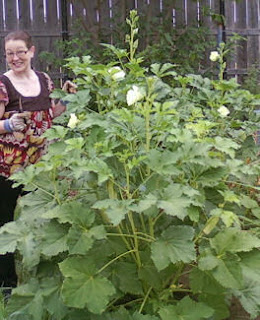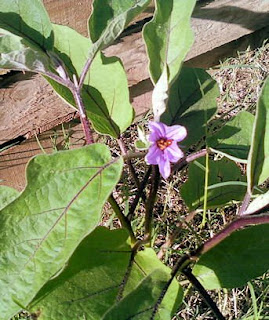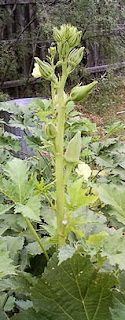This year, obviously we needed to address some of the issues we faced last year. At the end of the summer growing season, this meant that we needed to research and learn. Thanks to books and the internet, this has become a much easier task than it would have been years ago. Of course, a generation ago, we probably would have learned it all from our parents while growing up tending the garden with them. It amazes me the things we have lost in just one generation in the rush to have it all in a fast, convenient, prepackaged way. But that is for another day....
The first thing we needed to address was the problems we had with space and soil. Our garden needs to produce enough to feed my family of 5, my sister's family of 5, and my two parents. We have a nice plot of land at my parents' house to use, but it is limited in space somewhat. When we started thinking of a way to produce enough for all of us, we really could not feasibly achieve full production in the space we have there. Row gardening last year was nice, but there was so much wasted space between rows and plants. In the ground, weeds also easily took over sometimes. We used much more water and effort than we have the time and money for.
In my research, gardening in raised beds began to intrigue me. I purchased
All New Square Foot Gardening
and began to study. The thought that I could grow the same amount of food in 20% of the space needed when using row gardening seems amazing to me! With this type of gardening, there are benefits that we are looking forward to taking advantage of.
- LESS SPACE: If we cut out the need to have space to walk in between rows of the garden, we can be grow more efficiently.
- LESS WATER: The raised boxes have a special mix of materials that hold water for a longer period of time and the mix is the only thing receiving the water. Thus, no wasted water resources.
- BETTER SOIL: This mix also helps to solve the problem of our soil here in North Texas. We have a hard, clay soil that is not quite as conducive to the type of production that we would like to see. By creating the mixed growing medium, we eliminate the problem of poor soil and years needed to condition the earth for our needs.
We will be starting our conditioning of the soil in the ground this year with compost, tilling, overwintering with plants like turnips, and perhaps learning to use biochar as a resource (I am just beginning to read up on this technique). Since some of the plants we grow (okra, corn and squash) will still actually be placed in the ground, soil improvement will be important.
We wanted to get an idea of how the boxes would work, so we set up four with cool weather crops like spinach, snow peas, baby carrots, Swiss chard and cauliflower. We planted in late fall and they sprouted, but have been green, but dormant since. We are anxious to find out if they will begin their production when the temperatures start to warm. We will be adding (hopefully) ten more boxes to the collection for the summer crops.





